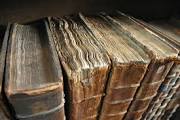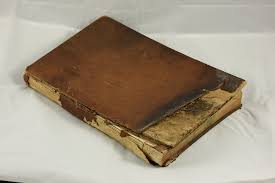Mold Control and Prevention in Libraries

Mold prevention is a conservation activity that is performed in libraries to protect books and other materials from deterioration caused by mold growth. Mold prevention consists of different methods, such as chemical treatments, careful environmental control, and manual cleaning. Preservationists use one or a combination of these methods to combat mold spores in library collections.
Due to its resilient nature, mold prevention has become an important activity among preservation librarians. Mold reproduces by releasing spores into the air. It becomes active after being in a dormant state and responds to fluctuating temperature, air flow, and humidity within the surrounding environment. Library holdings have been deemed vulnerable since mold digests paper and other organic materials that collection items consist of. Moisture in the atmosphere contributes to irreparable damage caused by mold growth.
Chemical Treatment
Preservation librarians use a number of different chemicals to prevent the growth of mold spores. Chemical compounds such as ethylene oxide, thymol, and orthophenyl phenol are regularly used. Chlorine dioxide is a chemical that is growing in popularity due its safety level for library employees and patrons. These chemicals act as effective sporicides in a variety of library settings. They are applied on books and surrounding shelves by manual wiping or using chlorine packets that release the chemicals in gaseous form into the air.
Chemical treatments are often used in enclosed storage areas with little air circulation. They are also used to deal with emergency situations involving mold outbreaks caused by pipe leaks in buildings. In 2000, the University of Oklahoma Libraries conducted an evaluation of the effects of chlorine packets on mold growth. Paper items that had been exposed to the substance showed lower overall pH levels than items that had not been treated. Although long-term effects of chemical treatments on paper permanence and other library materials have not been documented, libraries use this newer method of controlling mold in the stacks.
Environmental Control
Many libraries monitor a building’s atmosphere through the use of HVAC systems. These built in ventilation systems help to combat mold growth that occurs as a result of high relative humidity levels and temperature, as well as poor air circulation. Proper use and monitoring of HVAC systems can help to prevent mold problems before they occur. Air ventilation removes existing mold spores from the air and keeps the atmosphere relatively dry and cool. Effective HVAC systems have good system design as well as the ability to provide environmental control over entire building areas. They should also be well maintained and be up to date with new technology.

Manual Solutions
Manual methods such as HEPA filtered vacuuming serve as a backup to eliminating mold via environmental control. HEPA vacuums possess air filters that do not allow mold to be spread into the air again. Installing drying fans, dry wiping books and surrounding furniture, as well as air ducts and shelves also help to prevent further infestations. In extreme cases, some books and items are discarded to protect the rest of the collection from being affected. These preservation activities are provided by available library staff or hired contractors
Alternative Methods
Freeze drying or ultraviolet light exposure are other ways to inhibit mold growth, although they do not kill mold spores permanently. Eliminating mold through these methods is challenging due to paper degradation caused by light exposure over time. There are also some mold species that have preferences for colder temperatures. Freezing and UV exposure are used as a temporary means to stop mold from spreading throughout library collections.
Source: Wikipedia; free to use as per Creative Commons.
Aspen Environmental Services recommends that homes and businesses use a professional, licensed mold testing and removal service to make certain that mold is removed and won’t come back.
Please contact Aspen Environmental Services for mold testing and removal at (978) 681-5023. Or email [email protected]
